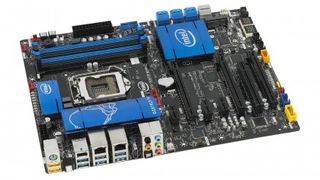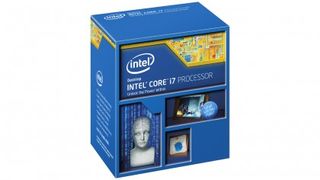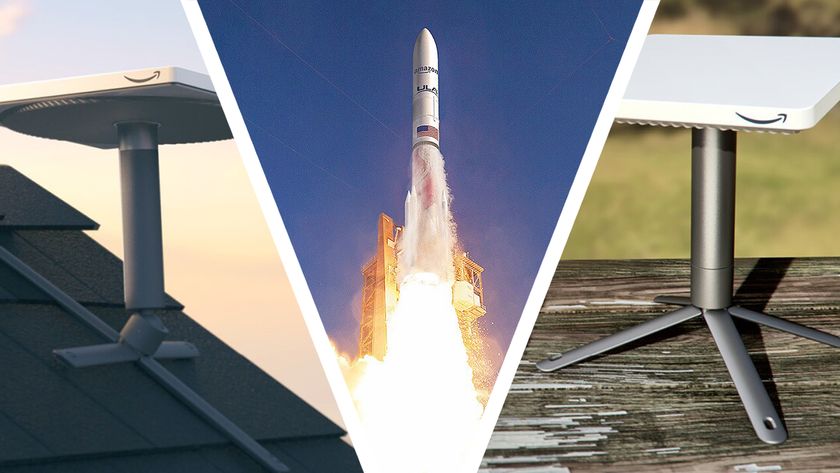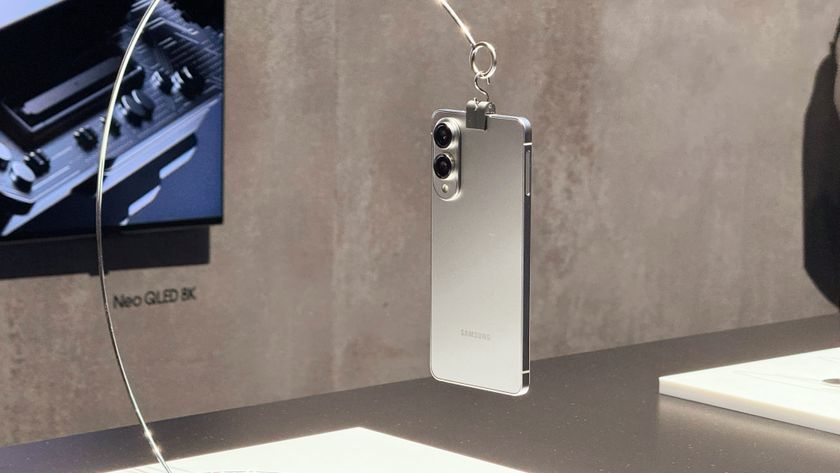Haswell: everything you need to know about Intel's latest Core processors
Intel's latest chips uncovered
And what of AMD?
The quest for improved mobility goes a long way towards explaining why Intel's Haswell chips disappoint as desktop processors. But it's not the whole story.
A major contributing factor is AMD's inability to keep Intel honest. It's impossible to know exactly what the world would look like if AMD had more competitive CPUs. But we're confident Intel is capable of a lot more than it is currently releasing in pure CPU power terms.

After all, its mainstream chips have been stuck on four cores for several years. And the physical size (and therefore manufacturing cost) of those same mainstream CPUs has been shrinking. That means Intel can make more money per chip.
And without AMD to force it to give us all something better, you can hardly blame Intel for cashing in on its advantage. It's a business with shareholders and it exists for one purpose. To generate wealth for those shareholders.
What we desperately need, then, is for AMD to give Intel a kick up the behind in the shape of some faster CPUs. Of course, the good news is that Intel's current tactic of mostly standing still is giving AMD a better chance of catching up.
There's still a long way to go, but there are reasons to hope AMD's upcoming Steamroller architecture revision might just get the job done. Certainly, AMD is targeting the main weakness of its current FX desktop processors, namely single-threaded performance.
The problem is AMD's clever modular architecture. Each module arguably shares too much hardware across a pair of execution cores. Steamroller aims to fix that courtesy of a switch to independent decode engines for each integer engine in a Bulldozer module.
Are you a pro? Subscribe to our newsletter
Sign up to the TechRadar Pro newsletter to get all the top news, opinion, features and guidance your business needs to succeed!
Instruction fetch is still shared across a pair of integer units, as is the floating point unit. But Steamroller is significant step in the right direction. It's due out early next year on the desktop. And it's badly needed, for both AMD and the PC market as a whole.
Haswell desktop CPUs: what's available?
Haswell isn't that exciting on the desktop, but if you're in the market for a new CPU anyway, it should be on your list. Exactly what models are available? On the mobile side, there are a bunch of dual and quad-core models. As we go to press the NDA hasn't quite lifted on the dualies, but the quads take in the H and M families, the former packing the vaunted Iris Pro graphics for maximum 3D performance.
So Intel Core i7-4800MQ, 4900MQ and 4930MX, which are the high clocking, but only have the slower Intel HD Graphics 4600 3D core. Meanwhile the 4950HQ and 4850HQ have lower clocks, still four cores and Iris Pro 5200 graphics. If that's not confusing enough, the pricing overlaps a bit. You'll typically be buying them as part of a laptops, so the actual numbers aren't hugely relevant.

On the desktop side, there's a whole hill of quad core i7 and i5 chips at launch, but just the one dual-core model. All but one has Intel HD Graphics 4600, so that's easy enough to remember. For now, anyway. In the mix are a bunch of low power chips, but we'll ignore most of those as they're only value for money in very specific scenarios.
From the bottom, then, there's the Intel Core i5-4750T. Two cores, four threads, 2.9GHz baseclock, 3.6GHz Turbo, yours for about £160. Then there's the 4570, four cores, four threads, 3.2Ghz/3.6GHz and about the same price. And the £190 4670K, again four cores and threads, 3.4GHz/3.8GHz and an unlocked multiplier for overclocking.
Next up, the first Core i7 chip, the 4770. As an i7 it's four cores but eight threads and 3.4GHz/3.8GHz. £250 all in. As for the range topping 4770K, that's £275 in return for four cores, eight threads and 3.5GHz/3.9GHz.
Now why not read our Intel Core i7-4770K review?
Technology and cars. Increasingly the twain shall meet. Which is handy, because Jeremy (Twitter) is addicted to both. Long-time tech journalist, former editor of iCar magazine and incumbent car guru for T3 magazine, Jeremy reckons in-car technology is about to go thermonuclear. No, not exploding cars. That would be silly. And dangerous. But rather an explosive period of unprecedented innovation. Enjoy the ride.











